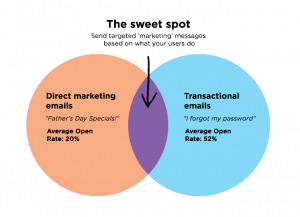Discover why you should move beyond last-touch attribution to capture the full impact of marketing channels for better performance.

Traditional marketing tracking methods like unique phone numbers and coupon codes are becoming less effective. With stricter privacy regulations and consumers gaining more control over their data, marketers have turned to digital attribution using pixel-based tracking. However, this method overlooks the full customer journey by focusing only on the last interaction before conversion. To better understand marketing impact, distinguishing between attribution and measurement is important.
The limitations of digital attribution
Digital attribution involves assigning credit to specific touchpoints, often focusing on the last interaction before conversion. However, this oversimplifies consumer behavior by assuming the most recent channels are the primary drivers of conversion. It overlooks how different marketing channels influence decisions throughout the customer journey, from awareness to conversion.
The customer journey is rarely linear. It involves multiple touchpoints across various channels before a conversion occurs. In case studies with a consumer brand, traditional attribution methods missed the influence of offline media on sales. However, advanced Bayesian modeling showed that offline media and PR efforts significantly boosted both branded and non-branded searches. This highlights the limitations of last-touch attribution and the need for a more comprehensive measurement approach that captures the full customer journey.
Advanced measurement models: A holistic view
Attribution typically assigns credit to specific interactions, while measurement evaluates the overall impact of marketing across the entire customer journey. Advanced models like Bayesian modeling offer deeper insights by considering how channels interact. These models turn data into actionable insights, helping businesses measure the combined effect of their marketing efforts rather than focusing on just one channel.
Real-world insights from consumer brands
In our work with consumer brands, Bayesian modeling revealed that even after offline media was turned off, it continued to drive actions like enrollments or purchases, showing that multiple touchpoints influence the customer journey over time, not just the final interaction. Digital channels like connected TV (CTV) and search also played key roles — insights that traditional attribution would have missed.
Case studies further confirmed this, with correlation and regression analyses identifying strong links between offline media spending and sales. Despite being uncredited in simple attribution models, offline media was a major driver of lower-funnel activities. Bayesian modeling quantified this with high certainty, showing offline media and PR as top contributors to sales in a consumer technology campaign.
Media mix models reinforced the value of comprehensive measurement. Offline media still positively affected consumer actions, even when turned off. Channels like CTV and Display exhibited strong growth, with CTV outperforming online video (OLV). Branded search, influenced by other channels, remained the strongest last-touch conversion driver, highlighting the need for a holistic approach to measuring performance across all channels.
Navigating the complexities of marketing with advanced models
Understanding the difference between attribution and measurement is crucial for marketers aiming to optimize their strategies. By prioritizing measurement, businesses can reveal the hidden interactions between channels and identify the true drivers of success.
As consumer brands shift their focus to higher lifetime value (LTV) outcomes, they are reassessing the importance of channels like CTV and social media. Saturation curves show that TikTok is great for raising awareness but has limited direct impact on conversions. This insight allows brands to adjust their media investments, shifting budgets from oversaturated channels like native ads to more effective strategies like display retargeting, optimizing the entire customer journey.
Key takeaways for marketers
To summarize, here are the key takeaways from the above:
1. Privacy concerns and market evolution
As privacy regulations grow stricter, traditional tracking methods are becoming less effective. Advanced measurement models provide an alternative by offering a deeper understanding of marketing impact without relying solely on user-tracking technologies.
2. The flaws in attribution
Digital attribution’s focus on recent touchpoints often fails to capture the full customer journey. By not accounting for the complex relationships between channels, attribution can lead to misleading conclusions about marketing performance.
3. The role of advanced models
Bayesian modeling and other advanced statistical techniques offer a holistic view by measuring the overall impact of marketing efforts. These models can identify the cumulative effects of various channels, providing a more accurate and actionable picture of what drives consumer behavior across the customer journey.
4. Real-world applications
Case studies involving consumer brands illustrate the benefits of shifting from attribution to measurement. By embracing advanced models, these companies gained valuable insights into the true drivers of their marketing success, leading to more informed decisions and optimized outcomes throughout the customer journey.
Conclusion
These real-world examples show that prioritizing measurement over attribution provides a more reliable way to evaluate marketing effectiveness. Advanced statistical models capture the complex interactions between channels and help businesses make informed decisions, leading to better marketing outcomes. By embracing these insights, marketers can navigate today’s digital landscape more confidently and effectively manage the entire customer journey.
The post Unlocking the full customer journey with advanced marketing measurement models appeared first on MarTech.
(6)
Report Post






